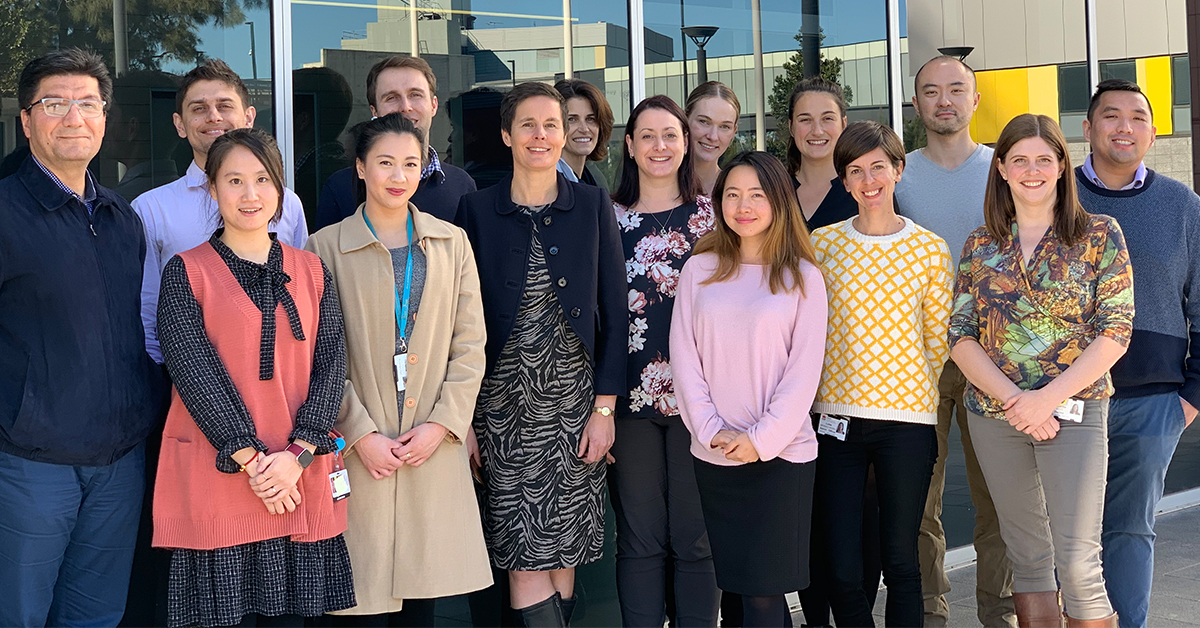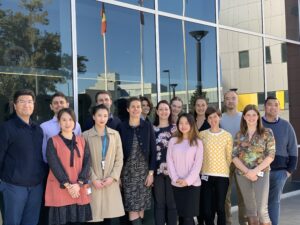
Your heart is an organ about the size of your fist. Your heart is at the centre of your circulatory system and is responsible for pumping blood through your body. A healthy heart supplies your body with the right amount of blood at the rate needed to work well and is fundamental to the healthy lives we aspire to lead.
No one knows this better than Professor Gemma Figtree, an interventional cardiologist and research lead of the Cardiovascular Discovery Group at the Kolling Institute. Having seen all too often the devastating effects of heart disease, Professor Figtree is determined to discover what we are yet to learn about the world’s biggest killer.
Getting to the heart of the matter, Professor Figtree discusses how researchers and clinicians are working together to discover early identification markers of cardiovascular disease.
The Kolling Institute, where Professor Figtree and her team are carrying out their research, is strategically placed near Royal North Shore Hospital – one of the leading hospitals for heart attack management.
“We are seeing more and more patients presenting with heart disease that don’t fit traditional risk factor profiling. Our labs are committed to finding out why” says Professor Figtree.
‘Time is muscle’ at the Cath Lab
When a person suffers a heart attack, the heart muscle is dying. Every minute that passes is causing irreversible damage to the patient’s heart. This is where the term ‘time is muscle’ comes from and multiple teams must work together to minimise the heart cells affected.
Where possible, paramedics perform an ECG (a test that detects cardiac abnormalities through electrical pulses) in the field and transmit this information to clinicians at the Cath Lab. Clinicians then review the results of the ECG to determine if they fit the criteria for a heart attack. Often these screening tests will enable a patient to bypass the Emergency Department and be taken straight to the Cath Lab, saving valuable time.
“People suffering from a heart attack come to us for primary percutaneous intervention – which is basically putting a stent into the blocked artery. By placing the stent as soon as possible means, fewer heart cells will be lost, improving the outcome for the patient”.
The face pimple analogy to explain plaque build-up in the arteries
Atherosclerosis is the buildup of fats and cholesterol that narrow artery walls and restrict blood flow. Professor Figtree uses the analogy of a pimple to help explain the importance of early detection of such buildups.
“It is not just the cholesterol that is dangerous but also the inflammation which even if it is not blocking the artery itself it is still causing instability. When it pops, the plaque’s actual contents meet the blood and activates the clotting that blocks the artery. This can then cause a sudden heart attack”.
This is why early atherosclerosis needs to be detected to apply aggressive, effective and preventative therapy. Professor Figtree and her team are focused on identifying methods aimed at picking up early atherosclerosis in individuals long before they suffer a heart attack.
The team are looking beyond the traditional risk profile, based on high blood pressure, high cholesterol and smoking history. By doing this, the research aims to identify blood markers that detect the disease earlier – before risk itself.
“Understanding why the individual’s vascular response, with traditional risk or not, varies so much can give us answers that can help all patients at risk of heart disease – especially as we are seeing an increase in the proportion of patients who are suffering from heart attack without any of the traditional risk factors”.
New Kolling Research reveals the complications of having a heart attack in the absence of standard risk factors
Professor Figtree and fellow Kolling Institute cardiology and researcher Steve Vernon, have been working with international collaborators using the extensive SWEDEHEART Registry cohort. Their work has led to discovering that individuals who suffer a heart attack in the absence of Standard Modifiable Risk Factors (SMuRFless) have an almost 50% higher mortality at 30 days post the incident. Their stunning discovery has just been published in one of the world’s most prestigious medical journals – The Lancet. This finding is particularly concerning for “SMuRFless” women- who have a three times higher early mortality than a male with traditional risk factors after suffering a heart attack and further highlights the need to discover missing mechanisms, markers, and treatments for people at risk of coronary artery disease. The team have also received a prestigious NHMRC Centre for Research Excellence grant for $2.5 Mill towards this work over the next five years.
The team has also been investigating a receptor called P2x7 – a receptor that is involved in causing the inflammation and it’s susceptibility to plaque independently as part of the development of a heart attack. They are currently collaborating to develop new drugs that can target this receptor. Their research has shown, so far, that it does seem to block harmful inflammation that is related to heart disease.
Donations get heart research projects pumping
Continuous funding is crucial to allow life-saving pilot research projects to be undertaken and continue to completion. Professor Figtree explains their work is heavily reliant on philanthropic support from various sources, including NORTH Foundation, Heart Research Australia, and the National Heart Foundation.
“We rely on the philanthropic contributions to support innovative new ideas and build up data to be successful with other national and international competitive sources”.
Working on the front line, directly with patients, reinforces just how important that new research continues. Not a day goes by that Professor Figtree doesn’t meet a patient or two who have or could benefit from some of the outcomes that cardiology research uncovers.
Often it is patients that help direct change, raise awareness and secure initial support of research programs.
Professor Figtree attributes the increase in public awareness and education as having led to members of the public being able to help resuscitate individuals through CPR before entering the Cath lab – saving lives and improving outcomes.
One patient who springs to mind making a difference in this area is Ian Hutchinson (Hutch) and his journey to becoming a strong advocate for cardiac education and awareness.
After his cardiac arrest experience, Hutch decided to set up a program called ‘CPR BBQ’ offering CPR and resuscitation education and training in a social setting. You can read more of Hutch’s story here and how powerful a change one person can make.
You can directly support Professor Figtree’s critical cardiology research and her team within the Cardiovascular Discovery Group at the Kolling Institute.
By choosing to make a monthly donation, you can help us provide long-term strategic funding within the Kolling Institute.
You can donate to this research area directly online on our website. Our researchers are grateful for every donation they receive.
About the Cardiovascular Discovery Group

The Cardiology Discovery Group’s main objective is to improve the survival and well-being of people with heart disease. This is achieved through two teams. The discovery group, mostly made up of biomedical researchers, focusing on understanding the normal mechanisms and coming up with new therapies. The clinical group manages large cohort studies and clinical trials that are emerging from the discovery group.


